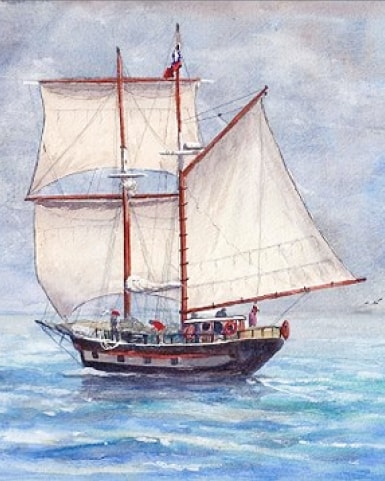Looking for new lettering techniques? Here is a brush lettering technique that will blow your mind away! It pays tribute to the craft of calligraphy and is easy to do, once you practice.
With this technique, you can design logos featuring eye-catching colour schemes. You can also create a style of writing that looks whimsical.
What you will need:
- Watercolour paper
- Camlin Pencil
- Camlin Brush
- Camel Artist Water Colours
- A toothbrush
1. Writing the word with a pencil first

Start with writing down the word on the watercolour paper. Write in a bouncy calligraphy style, as shown in the picture below. Make sure that you connect the first letter of your word to the edge of the left side of the paper. The ending stroke of the last letter of the word should loop around the word to connect to the first letter of the word on the left side of the paper, as shown in the picture below. Once this is done, draw another stroke that should connect the last letter of the word to the right side of your paper.

Now you can finish by drawing a vertical line that starts from the first letter of the word and connects to the top of the page. You can draw a second vertical line that starts from the letter ‘y’ (or any other descender such as g, p or j) and connect it to the bottom of the page. If your word doesn’t have a descender, you can draw a vertical line with any letter you choose.
2. Fill up the negative space with water colours

Now you can start adding colour to your lettering. Start by painting the negative space to the right side of your first letter with a fairly lighter tone of whatever colour of paint you choose.

Next, start blending the lighter shades with a darker watercolour at the edges of the negative space. Do this while the watercolour you applied earlier is still wet so that the new shade blends right in.

Try and blend the darker tones into about 50% of the area around the edges of the negative space and leave the space in the middle empty.

Using the same blending technique, close up all of the negative space in the word. What you are doing is that you are basically painting everywhere you have closed a loop.
3. Tracing the outline with a pencil

Wait for the paint to dry. Once dried, take a brush with a size 3 (or a size close to it) and trace over the pencil lines.

Continue to trace over the pencil lines and don’t worry about the thickness of the lines. The uneven lines can add to the whimsical effect.
4. Spattering with paint

Dip the toothbrush with paint and spatter the paint across your paper around the lettering.
Your art project is ready to be displayed! Let us know any particular art project that you would like us to cover on our blog.
Did you find this art project easy to do?
Share your thoughts with us in the comments below.
Leave a comment

Comment added
Comment updated
Comment deleted
More inspiration
“
“The world always seems brighter when you've just made something that wasn't there before.”






